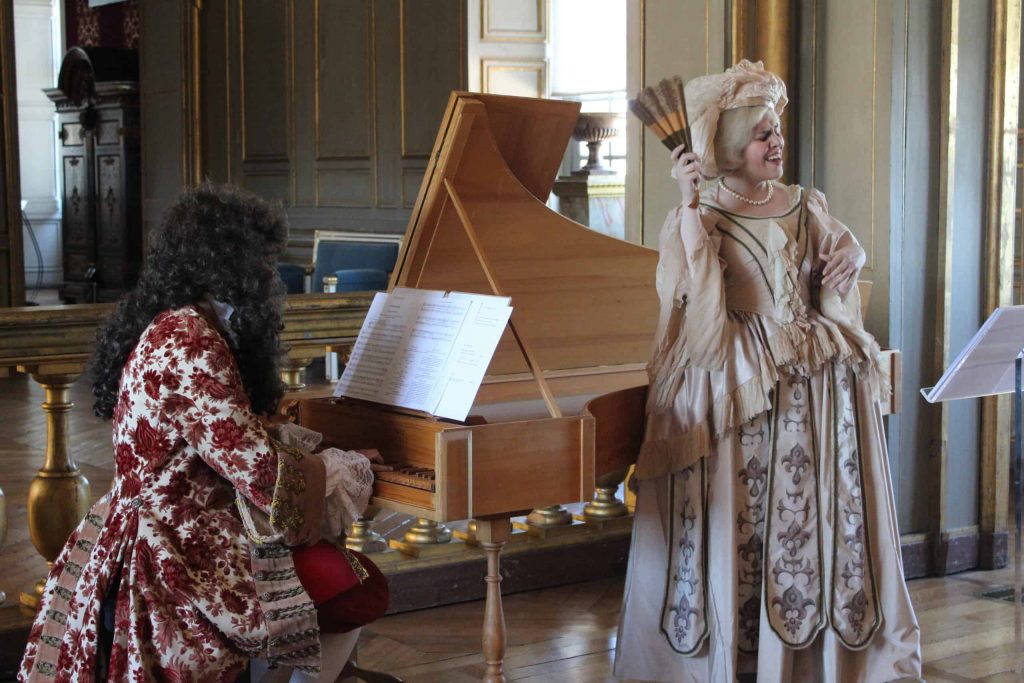The National Monuments Challenge continues this week with a visit to the Château de Maisons, otherwise known as Château de Maisons-Laffitte. This 17th century château is located in the suburb of Maisons-Laffitte, just to the west of Paris. On the day that I visited, the weather was glorious, and the beauty of the château was on full display. It also happened to be a day that history came alive, but I’ll get to that later. First, I’d like to tell you about the château that I have dubbed the (not so) little château that could.
Château de Maisons was originally built by René de Longueil, the Superintendent of Finances under King Louis XIV. Longueil decided that the best way to spend the fortune that his wife had inherited was to build a sumptuous residence for his family. Construction began in 1630, and continued for over two decades. It was finally completed in 1651, and in honour of the occasion, Longueil hosted an extravagant party for Anne of Austria, Queen Regent of France, and her two sons, Louis XIV and Philippe, duc d’Anjou. It was a party that would end up costing Longueil dearly.
Several months later, Louis XIV was determined to have reached the age of majority, meaning his mother was no longer Queen Regent. Louis now held power as the King of France. And one of his first acts as King? Dismissing Longueil from his post as Superintendent of Finances. The party at Château de Maisons was too extravagant in the King’s eyes, and therefore inappropriate for the man who governed France’s finances. Longueil was forced into exile and relieved of his other titles, but he was allowed to keep his château. He later worked his way back into royal favour through the marriage of his daughter.
A Succession of Owners
René de Longueil died in 1677, and for over a century, Château de Maisons passed through the hands of numerous owners. Some tried to refurbish the buildings and grounds, but many either let it be or ran out of money. By the late 18th century, the château had fallen into disrepair and was at risk of being torn down. However, it was saved by the outbreak of the French Revolution when it was confiscated by the revolutionaries and sold in 1798 to raise funds for the revolution.
Once again, Château de Maisons passed through a series of owners for over a century. Finally, in 1900, Russian painter William Tilman Grommé willed it to the town of Vyborg. As in the Russian town of Vyborg. That’s right. Somehow this French château ended up being the property of a Russian town. Thankfully, the maintenance costs proved to be too high for Vyborg, and in 1905, the château was sold to the French state. Château de Maisons was finally forever spared from demolition when it was named a national monument in 1914. As I said. It’s the (not so) little château that could.
Baroque Architecture at its Finest
Today, Château de Maisons is celebrated as being one of the finest examples of French Baroque architecture. This is because the architect was none other than François Mansart, considered to be one of the masters of this style. And I can see why. This château is beautiful from top to bottom, and remarkably well preserved given its history. In particular, the Salle des Fêtes is stunning, with its soaring ceiling, musician’s gallery, and hanging chandeliers. It’s easy to imagine the many parties that were hosted in this room over the years.

It’s also easy to imagine this because on the day of my visit, the chateau was hosting an interactive event, wherein actors in period dress acted out the history of the building. The sword fight demonstrations were certainly a hit with the children, but my personal favourite was the musician and opera singer who performed throughout the day in the Salle des Fêtes. And I do mean performed. They didn’t just play music and sing songs. They fully embodied their characters, complete with hilarious bickering in between the musical numbers. I came back to watch their performance several times, and each time I couldn’t believe my good fortune. I mean, how often do you get to explore a castle and magically stumble upon an opera show? Not often enough as far as I’m concerned.

Laura Moore is a professional storyteller who loves history and the many stories that make Paris one of the most fascinating cities in the world. Join one of her signature tours to learn the story of a city.




